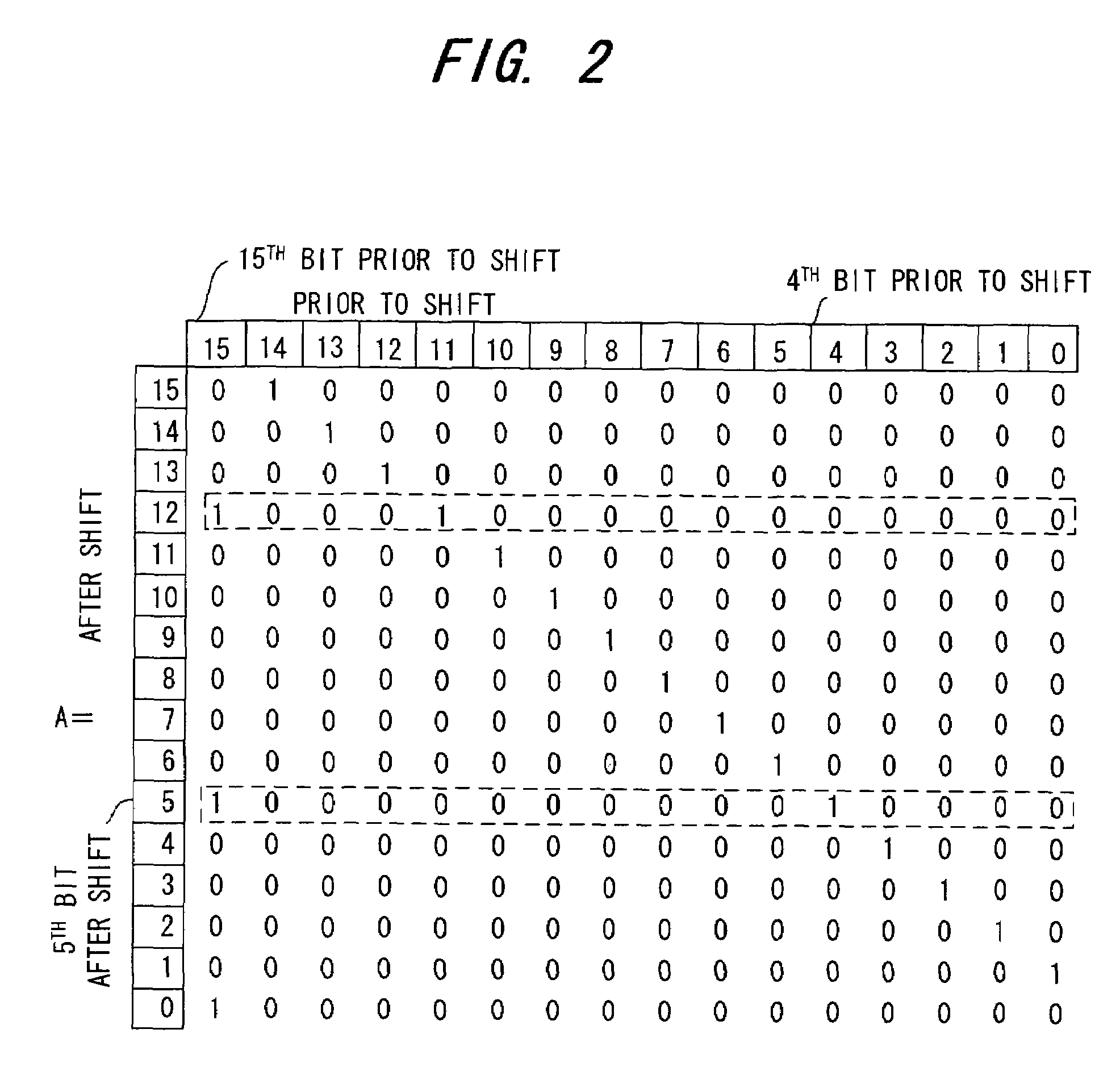Error-detecting encoding and decoding apparatus and dividing apparatus
a technology of encoding and decoding apparatus and dividing apparatus, which is applied in the direction of coding, code conversion, instruments, etc., can solve the problems of inability to resend control, marked decline in data transmission rate, and delay of one packet length, so as to shorten the time needed for crc calculation
- Summary
- Abstract
- Description
- Claims
- Application Information
AI Technical Summary
Benefits of technology
Problems solved by technology
Method used
Image
Examples
first embodiment
(B) First Embodiment
[0154]FIG. 30 is a diagram illustrating the structure of an error-detecting encoder according to a first embodiment. This is for a case where CRC parity of a 32-bit data string x1 to x31 is generated by the generator polynomial G(x)=x16+x12+x5+1. Components in FIG. 30 identical with those shown in FIG. 1 are designated by like reference characters. Further, it is assumed that 32-bit input data is segmented into strings x0 to x7, x8 to x15, x16 to x23, x24 to x31 of eight bits each and is expressed by
x24A(x)+x16B(x)+x8(x)+D(x)
[0155]Assume that the initial value in the shift register SR in all of the CRC calculating units 12A to 12D is “0”. A data segmenting unit (not shown) segments the 32-bit data string into strings x0 to x7, x8 to x15 x16 to x23, x24 to x31 of eight bits each and input these strings to respective ones of the CRC calculating units.
[0156]The bits x31 to x24 are input to the shift register of the CRC calculating unit 12A from the higher order side...
second embodiment
(C) Second Embodiment
[0161]FIG. 31 is a diagram illustrating the structure of an error-detecting encoder according to a second embodiment. Components in FIG. 31 identical with those shown in FIG. 15 are designated by like reference characters. Here 16-bit CRC parity has been appended to the lower order side of 32-bit input data. This CRC parity has been generated using the generator polynomial G(x)=x16+x12+x5+1 and appended to the input data string. Accordingly, the error-detecting decoder detects whether the information bits of 32 bits and the 16-bit CRC parity are correct using this generator polynomial G(x)=x16+x12+x5+1.
[0162]Assume that the initial value in the shift register SR in all of the CRC calculating units 22A to 22D is “0”. A data segmenting unit (not shown) separates the 48-bit data string into 16-bit CRC parity x0 to x15 on the lower order side and 32-bit input data x16 to x47 on the higher order side, segments the 32-bit input data into data strings x16 to x23, x24 t...
third embodiment
(C) Third Embodiment
[0168]FIG. 32 is a diagram illustrating the structure of an error-detecting encoder according to a third embodiment. Components in FIG. 32 identical with those shown in FIG. 21 are designated by like reference characters. In FIG. 32, 16-bit CRC parity has been appended to the lower order side of 32-bit input data. This CRC parity has been generated using the generator polynomial G(x)=x16+x12+x5+1 and appended to the input data string. Accordingly, the error-detecting decoder detects whether the information bits of 32 bits and the 16-bit CRC parity are correct using this generator polynomial G(x)=x16+x12+x5+1.
[0169]The 48-bit data string is segmented into data strings x0 to x7, x8 to x15, x16 to x23, x24 to x31, x32 to x39, x40 to x47 of eight bits each and is expressed by the following polynomial:
x40A(x)+x32B(x)+x24C(x)+x16D(x)+x8E(x)+F(x)
[0170]Assume that the initial value in the shift register SR in all of the CRC calculating units 32A to 32F is “0”. A data seg...
PUM
 Login to View More
Login to View More Abstract
Description
Claims
Application Information
 Login to View More
Login to View More - R&D
- Intellectual Property
- Life Sciences
- Materials
- Tech Scout
- Unparalleled Data Quality
- Higher Quality Content
- 60% Fewer Hallucinations
Browse by: Latest US Patents, China's latest patents, Technical Efficacy Thesaurus, Application Domain, Technology Topic, Popular Technical Reports.
© 2025 PatSnap. All rights reserved.Legal|Privacy policy|Modern Slavery Act Transparency Statement|Sitemap|About US| Contact US: help@patsnap.com



